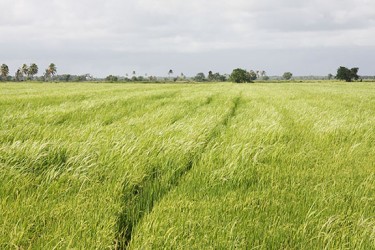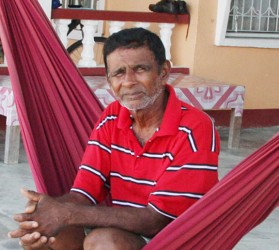Five years after the signing of the historic PetroCaribe ‘rice for oil’ deal between Guyana and Venezuela the euphoria in the sector that had resulted has been replaced with a more sober posture among stakeholders.
Not that the PetroCaribe deal is not still in place, but whereas at the start of the agreement in 2009, Venezuela absorbed around 65 per cent of Guyana’s total rice crop, exports to that country have now dipped to 32 per cent. Not because the volume of the country’s rice exports to Venezuela has decreased, but because Guyana’s rice production has grown steadily from 4.9 metric tonnes per acre four to five years ago to 5.2 metric tonnes per acre this year.
The Guyana Rice Development Board (GRDB) is doing its best both to assert its own role in ensuring that outstanding sums owed to farmers by millers for paddy are paid before too much time elapses and playing down the severity of the problem. The GRDB says that of a total of $23.5 billion that would have accrued to farmers for the first crop of 2014, only around $350 million remain outstanding.


Though they have not lost faith in the rice sector, Essequibo farmers insist that outstanding payments for paddy go further back than the 2014 first crop. Before PetroCaribe, between 28,000 and 32,000 acres of land were under rice cultivation in Essequibo. That figure has reportedly jumped to around 38,000 acres.
The problems associated with having to wait protracted periods to get paid have had a sobering effect on farmers. Though a stage has not been reached where life after rice has become the subject of discourse, there is talk of diversification and a few instances of actual movement in that direction.
At Land of Plenty on the Essequibo Coast last week, rice farmer/miller Ramesh Ramotar was engaging other farmers in an amiable discourse about diversification. He was extolling the virtues of rice farmers investing in more lands and directing their attention to cash crops on a rotational basis. Ramotar also believes that there is virtue in investment in more agricultural equipment which itself can be reabsorbed into the agricultural sector, either supporting GuySuCo or to serve as inventory for other farming pursuits. Ramotar himself has diversified into cash crops and construction and is now embarking on investment in the tourism sector.
Mohamed Abrahime wants the GRDB to create a more ambitious rice marketing regime to take account of increasing production. But he appears to have taken the option of diversification seriously.
He is rearing cattle, but concedes to a measure of concern that his modest herd of around 19 cows at Red Lock, an area aback of Anna Regina, where rice farming has been introduced, is vulnerable to being impounded. Each infringement can cost a hapless cattle farmer a fine of $10,000. It is a risky investment, particularly when some vagrant can simply chase your cows onto the rice farms and leave them vulnerable to impounding.

Pasture lands at Red Lock have had to give way to rice farming and Abrahime says the official advocacy of an expanded cattle industry is not matched by the availability of new lands.
At 67, Bhim Sain who also cultivates rice at Anna Regina, concedes that he is a ‘rice man’ but cannot say the same for his children. He says that the younger generation has seen the hard work associated with cultivating rice and the difficulties with securing

timely payment. He says he is “very worried,” preoccupied with the thought that when his own tenure in the industry comes to a close the tradition started by his father so many decades ago would have come to an end.
At the other end of the spectrum, 21-year-old Mahendra is starting out in the sector. A year ago, he rented 5 acres of rice land aback of Anna Regina. At the end of every crop he must pay rent totaling $200,000 and it was only at the end of August that he received payment for paddy delivered from this year’s first crop. He is not discouraged but with a young family to support, he too is keeping his options open.





